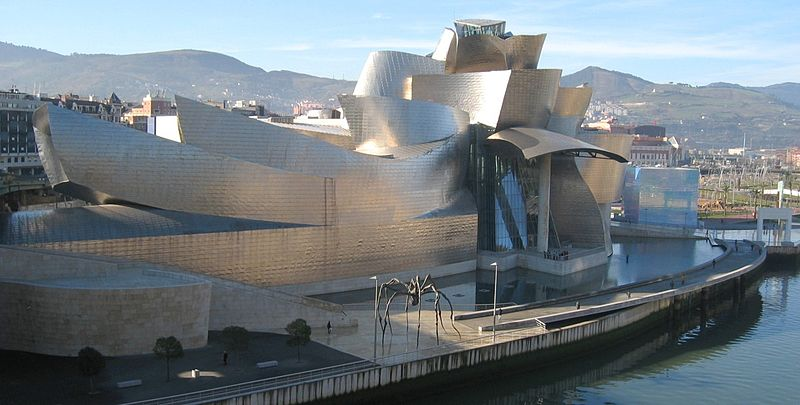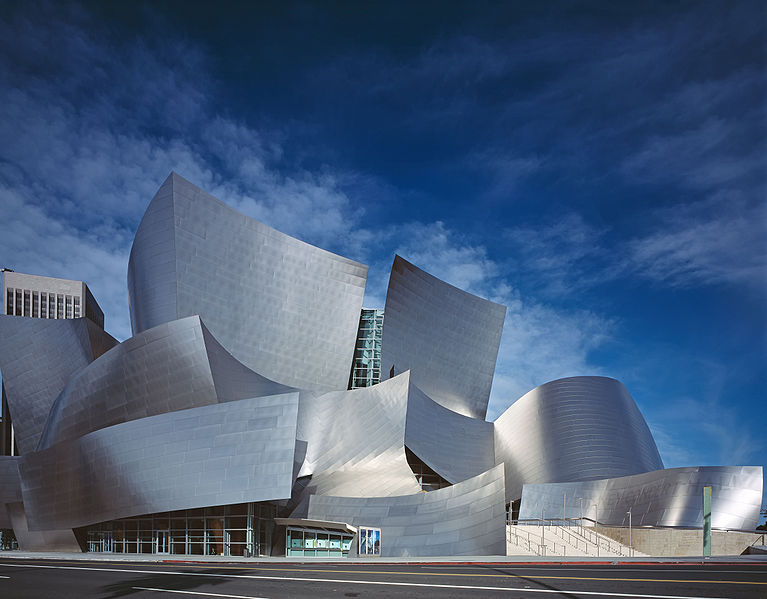Introduction
The essay is a comparison of architectural work of Frank Gehry. He is a Canadian-American born in 1929 living in Los Angeles, California. All of his works have elicited excitement; even his own residential home has turned out to be a tourist attraction. In 2010, he was labeled the most important architect of our age.
Indeed, he is credited for a number of work such as Guggenheim Museum in Bilbao, MIT Stata Center in Cambridge in Massachusetts, Walt Disney Concert Hall in downtown Los Angeles to mention but a few. His works have been categorized as being deconstructivism (post-structuralist) as it goes beyond present modalities of structural definition. In most of his work, he uses unorthodox materials such as corrugated metal as well as chain link.
The result is usually an unexpected twisted form which tends to break the general accepted building designs. As a result his, most of his works have been termed as radical, playful, sensual and organic. The paper only compares and contrasts two of his famous buildings “Guggenheim Museum Bilbao” and “Walt Disney Concert Hall”.
Guggenheim Museum Bilbao
Guggenheim Museum Bilbao has been thought to be the greatest building of our time it is 24,000m2 where almost a halve of it is dedicated to exhibition purposes. The building is characterized by twisted, lines that are curving as well as a series of interlinking volumes made up of limestone coated with orthogonal shapes while some are made up of titanic skin.
A glass curtain wall complements this design making the building to be transparent. The color of the limestone was dictated by the match it will bring with the existing building, Deusto University. The glass used was treated to help protect the inside of the building from heat as well as radiation while making sure that light penetrated. Additionally the titanium which looked like fish scale added beauty to the building (Bucher 73).
It is over 50 meters tall and well illuminated thanks to the wide windows. The space used for exhibition has 20 galleries having unusually irregularity, exhibition of huge art works and some having a classical proportion.
The building also contains an auditorium accommodating 300 seating visitor, a restaurant, two cafes, a store and a bookshop. These blocks were designed in such a way that it is possible to access them from the museum square or from outside the building thus making it possible to be operated independently. The atrium ensures that visitors are able to see the hills and estuary.
The floors of the galleries are linked to a system of curved walk ways which are suspended from the ceiling, glass lifts as well as stairs. The building was design in such a way that it looks like a ship, this indeed goes well with the presence of the river hence deemed to be environmentally friendly (Guggenheim Bilbao par. 6).
Despites its glow, there are some problems linked to the building. In less than three years since its occupation, the building was stained by rust-like stains. This is attributed to air pollution, moisture as well as silicon utilized during construction of the building. Frank blames the inability to thoroughly clean the building as the major cause of this problem (Bucher 23).

Walt Disney Concert Hall
While Guggenheim Museum Bilbao was an art museum, Walt Disney Concert Hall is a concert hall located at 111 South Grand Avenue in Los Angeles California. The construction cost was $240 million. Regarding the work, Paul Goldberger stated that “It is a serene; ennobling building that will give people in this city of private places a new sense of the pleasures of public space” (Dal Co & Forster 45). The building is located on a historic Bunker Hill as compared to Guggenheim Museum Bilbao which is situated between hills and a river.
The exterior of the building is made up of stainless steels that are curved in an aesthetic manner. The color used rhymes with the surrounding environment (Tavis par. 4). The graceful curves of the building are comparable to those of Guggenheim Museum Bilbao. Interestingly the colors used in this building almost resemble the one used in Guggenheim Museum Bilbao.
In my view, the building constructively utilized calligraphy. In the front of the building the words ‘Walt Disney Concert Hall’ are artistically embedded in the stainless steel (Fig. 2).
However, the reflection is too much that the words cannot be clearly seen in a sunny day. Although the building was very attractive, the glare as a result of sunlight made the occupants of neighboring building to complain. Additionally heat from the reflection made some rooms to be extremely warm. The solution was thus to dull these surface by lightly sanding the panels so that undesired glares are done away with.
The concert organ is distinctive and unique in design. The curved wooden pipe concert is not only very simple and attracting but also musically viable. The concert organ had 72 stops, 109 ranks and over 6,000 pipes with varying sizes (Harry 23). Inside the hall, the walls as well as the ceiling are made up of Douglas-fir. On the other hand, the floor was finished with oak. In terms of reverberation time, it is about 2.2 seconds and 2.0 seconds when not occupied and occupied respectively.
Conclusion
Both of Frank Gehry buildings to me are very attractive. I definitely like them. The reason being that the design is not only artistic and attractive but well thought out and seriously considers the environment.


Works Cited
Gruppe, Bucher. Frank Gehry: Vitra Design Museum, Marta, Guggenheim-Museum Bilbao, Tanzendes Haus, Walt Disney Concert Hall, Museum Der Toleranz, G. Frankfurt: Books Llc, 2010. Print.
Dal Co, Francesco & Kurt, Forster. Frank O. Gehry: The Complete Works. New York: The Monacelli Press, Inc., 1998. Print.
Guggenheim Bilbao. The Guggenheim Museum Bilbao Building, 2007. Web.
Abrams, Harry. Symphony: Frank Gehry’s Walt Disney Concert Hall. New York: Wiley & Sons, 2003. Print.
Smiley, Tavis. Commentary: Famous Walt Disney Concert Hall sits among the most devastating poverty in Los Angeles, 2004. Web.